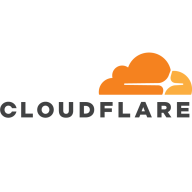


Kemp LoadMaster and HAProxy compete in the load balancing domain. Kemp LoadMaster appears to have the edge with its ease of use, stability, and integration capabilities favored by users.
Features: Kemp LoadMaster provides seamless deployment with user-friendly templates, edge security, and multifactor authentication. It offers high availability and smooth updates, making it reliable. HAProxy is open-source and customizable, excelling in protocol-level load balancing and handling heavy traffic, though it requires technical expertise.
Room for Improvement: Kemp LoadMaster could benefit from better template customization and enhanced security features, along with a more streamlined user interface. HAProxy needs improvement in its documentation, GUI, and dynamic configuration capabilities to enhance usability and efficiency.
Ease of Deployment and Customer Service: Kemp LoadMaster is known for simple on-premises and private cloud deployment, with technical support praised for responsiveness and expertise. HAProxy offers ease of deployment supported by community resources but requires a technical background for effective use and lacks centralized support compared to Kemp.
Pricing and ROI: Kemp LoadMaster has a structured pricing model with flexible licensing options, providing a financially viable choice with solid support and ROI. HAProxy’s open-source licenses make it a low-cost alternative, appealing to those investing in internal expertise for optimal performance.
WordPress security can be tricky, and that's where Cloudflare can be absolutely helpful for small businesses.
For the small project I was working on, using the basic tier provided a huge improvement at zero cost.
In terms of return on investment with Cloudflare, it costs my time to set them up, but basically once they're set up, it's done.
Operational efficiency has improved; we no longer have staff consistently monitoring backend servers during deployment or scaling events, as HAProxy's health checks and hitless reloads allow us to push changes with minimal manual intervention.
This would help us address issues promptly, especially during unforeseen events like DDoS attacks.
Cloudflare does not offer hands-on technical support to fix customer problems but rather a self-service model.
The key factor is the language in which the support is offered, which, in this case, is in Thai.
Since we are utilizing the open-source edition, community forums, mailing lists, and GitHub have been invaluable, with typically someone having encountered the same problems we faced.
We have not received technical support from Kemp LoadMaster without a license.
It is a SaaS tool, but the fact that they have workloads deployed across the world proves that it is a highly scalable tool.
The tool offers very good performance, even during high-traffic periods.
I rate the solution’s scalability an eight out of ten.
HAProxy's scalability is excellent; as our traffic expands, it handles load increases effortlessly.
Kemp LoadMaster is a scalable solution.
For DDoS protection, I would not recommend Cloudflare.
I rate the solution’s stability an eight out of ten.
The service is very stable with no impacts during high-traffic periods.
This reliability serves as a key reason for our choice, providing us with confidence even when faced with heavy traffic.
With the license purchase afterwards, if it expires, it begins dropping the HTTP traffic, also the DNS traffic.
There's a need for improvement in areas like AI-based DDoS attacks and Layer 7 WAF features.
Despite these challenges, overall, Cloudflare remains the preferred solution compared to Azure, AWS CloudFront, and Google Cloud Armor.
The timing aspect can lead to it being considered overpriced. This is a particular concern we have with Cloudflare, as they may struggle with accurately detecting the client.
The configuration syntax is powerful yet can become overwhelming for newcomers; a more beginner-friendly interface or a native GUI without relying on third-party tools would ease the onboarding process.
After that, they said if it was good, we could purchase the license, and while we found it very good, the license cost was too high.
That's where Cloudflare shines for smaller businesses – it's ten times cheaper than Akamai.
I find it to be cheap.
I think they should consider reevaluating the pricing for support, as it can be quite high.
Since we use the open-source edition, there are no licensing fees, with the main cost being the infrastructure running on EC2 instances in AWS, which helps maintain low expenses.
The most valuable features of the solution are performance and security.
Techniques like minification and image compression reduce the size of assets, leading to better performance and faster user load times.
The solution has been able to compare it to the market, and I think the product has taken great strides in automating quite a bit of things, and they use a lot of AI.
By moving all SSL termination to the load balancer, I now manage certificates in a single place, and I can also utilize Let's Encrypt with HAProxy's built-in ACME support, making renewal automatic.
We had some issues in patching management, so we deployed this product for virtual patching, the IPS rule, and it gives us very good results because we have very critical servers.



| Company Size | Count |
|---|---|
| Small Business | 46 |
| Midsize Enterprise | 8 |
| Large Enterprise | 25 |
| Company Size | Count |
|---|---|
| Small Business | 15 |
| Midsize Enterprise | 13 |
| Large Enterprise | 15 |
| Company Size | Count |
|---|---|
| Small Business | 24 |
| Midsize Enterprise | 13 |
| Large Enterprise | 16 |
Cloudflare is a highly-regarded Content Delivery Network (CDN) and a Distributed Denial-of-Service (DDoS) protection solution. The robust global connectivity cloud platform that is Cloudflare ensures users are able to connect to the Internet quickly, securely, and reliably. Cloudflare is one of the world's largest networks in the marketplace today. Using Cloudflare, businesses, educational entities, NGOs, vloggers, bloggers, and anyone else with an internet presence can experience more secure, faster websites and applications.
Currently, there are millions of Internet locations on Cloudflare, and the Cloudflare network
continues to grow every day by the thousands. The solution is able to fulfill the requests for
millions of websites seamlessly and serves on average 45 million HTTP requests per second.
Cloudflare has safe, secure data centers in close to 300 cities worldwide to ensure every
client request is filled as quickly as possible. It is Cloudflare’s edge network that makes this
possible by keeping content and other services as close to each client as possible, so the
information requests are always only seconds away.
Many organizations that work in democracy, civil society, human rights, or the arts are able to
access Cloudflare's highest levels of protection for free via Project Galileo. Additionally, official
election websites can be secured from hacking and fraud through Cloudflare’s Project
Athenian, also at no additional cost.
Cloudflare can also help organizations of all sizes develop a robust zero-trust strategy to
ensure the highest levels of productivity and profitability. Employees, stakeholders, and end users have a greater level of satisfaction and overall improved user experience, which can, in
turn, result in higher revenues and overall ROI. Zero-trust and BYOD (bring your own device)
access ensure end users and employees always have the best resources and technology
available to them at all times.
Cloudflare benefits
Cloudflare has many benefits. Some of its most valuable benefits include:
- Faster load times
- Robust DNS security
- Intuitive cloud Web Application Firewall (WAF)
- Free universal SSL
- Image enhancement
- Automatic browser caching
- Next-generation cloud load balancer
- Accelerated Mobile Pages (AMP)
- Rate limiting
- Minification
- Zero-trust capabilities
- Cost-effective
- Reduced carbon footprint
Reviews from real users
“Many websites require an SSL certificate because they sell stuff and want SSL. Cloudflare
comes with an SSL certificate built in. It's automatic. You sign yourself up for Cloudflare, and
an SSL certificate automatically protects your website. If you have a connection between your
website and your host, the server, Cloudflare, and the host, you don't necessarily need a
certificate.” Spencer M., Owner at Tech Exchange
“What I like best about Cloudflare is that my company can use it to trace and manage
applications and monitor traffic. The solution tells you if there's a spike in traffic. Cloudflare
also sends you a link to check your equipment and deployment and track it through peering,
so it's a valuable tool.” Daniel P., Network Engineer at Ufinet
“The most valuable feature of Cloudflare is the GUI. You are able to control the solution very
well through the interface. There is a lot of functionality that is embedded in the service.” PeerSpot user, Competence Center Manager at a tech services company
HAProxy is considered by many in the industry to be one of the fastest and most popular and trusted software load balancer products in the marketplace today. Organizations are able to immediately deploy HAProxy solutions to enable websites and applications to optimize performance, security, and observability. HAProxy solutions are available to scale to any environment.
HAProxy is an open-source product and has a robust, active, reliable community. The solutions are continually tested and improved on by the community. HAProxy offers a dynamic design to support the most modern architectures, microservices, and deployment environments (appliances, containers, virtual, and cloud).
HAProxy utilizes a cloud-native protocol, which makes it a complete solution for cloud services such as Red Hat OpenShift, OVH, Rackspace, Digital Ocean, Amazon Web Services (AWS), and more. It also can be used as the reference load balancer in OpenStack.
HAProxy Products
Reviews from Real Users
“Having the right load balancing solution – which is what HAProxy is – and protection in place gives organizations peace of mind.” - Nathanel S., Platform Architect at SES
“I use HAProxy for individuals who can not buy low balancers. I built NFV in a box and send individuals a pathway into an HAProxy VM. The setup was not difficult; it usually takes a day to complete for a VPC. When it comes to pricing, HAProxy is free.” - Nasir O., Network & Cloud Architect at Koala Compute Inc.
Kemp LoadMaster is a powerful load balancing solution that also serves as a web application firewall. Its primary use case is load balancing and application load balancing, making it an ideal solution for organizations that must distribute traffic across multiple servers. Kemp's integration with an active directory for ESP usage, hosting/deployment of SSL certificates, and pricing are some of its most valuable features.
Using Kemp has helped organizations mitigate cross-scripting vulnerabilities, cookie-related issues, and content security policy issues. It has also allowed them to handle everything with Kemp instead of working on each application individually.
We monitor all Application Delivery Controllers (ADC) reviews to prevent fraudulent reviews and keep review quality high. We do not post reviews by company employees or direct competitors. We validate each review for authenticity via cross-reference with LinkedIn, and personal follow-up with the reviewer when necessary.